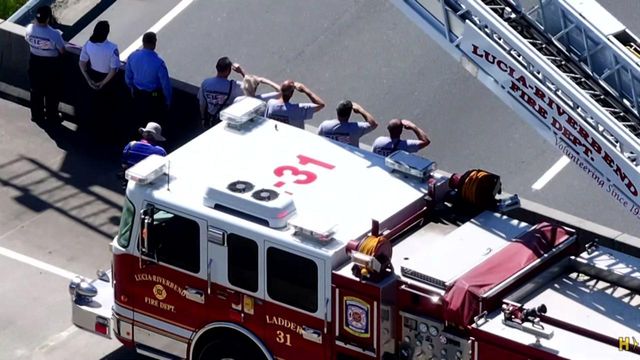5 reasons why sod is the right choice for your lawn

This story was written for our sponsor, North Carolina Sod Producers Association. This promotion is supported in part by the N.C. Department of Agriculture and Consumer Services Specialty Crop Block Grant Program.
When deciding between establishing your lawn from seed or covering your lawn with sod, you may not realize that there are some significant upsides to sod usage.
From lower cost to easier and faster implementation, here are 5 reasons why sod is the best choice for your lawn.
1. Grass Selection
Believe it or not, some of the most popular lawn grasses used in North Carolina — including Bermuda, zoysia, St. Augustine and centipede — can only be vegetatively planted, and sodding is the primary means.
Two reasons for this is that certain lawn grasses either lack uniformity when seeded or do not produce viable seed. Some of the sod grasses that are used for home lawns are the same as those used on most high school, college and professional athletic fields. Some of them have been developed and/or tested at universities such as North Carolina State University to ensure they perform well under North Carolina growing conditions.
The North Carolina Sod Producers Association is a great resource for helping you decide which grass is best for your situation.
2. Flexibility in planting
Sod, unlike seed, can be planted anytime of the year as long as the ground is not frozen. Seed, on the other hand, needs to be planted at certain times of the year depending on whether you are planting warm-season grass or cool-season grass.
Cool-season grasses are best seeded in early fall, but constant care is required for several months. Spring seeding of cooler grasses like tall fescue and Kentucky bluegrass in the Piedmont region of North Carolina often fails because of increasingly high temperatures and competition from annual grassy weeds such as crabgrass.
For the few warm-season grasses that are available via seed, they must be planted in late spring to early summer and also require diligent care.
Because sod is a fully mature, cultivated product, it can be installed on slopes where seeding is usually difficult — if not impossible.
In addition, the seeding season may not fit into a busy schedule since seeding can take several months. Sod also arrives weed-free and dense enough to keep out most weeds, requiring less herbicides. Starting from seed requires hope that the grass seedling will fill in before any weeds establish, increasing general lawn maintenance.
3. Time for full establishment
Since sod is a lush carpet of natural grass, it looks good from the moment it is installed. Seed, on the other hand, could take months to years to fully mature.
During that time frame, you’ll likely still be using your yard, dragging hoses, playing with pets and children and tracking mud from the unfinished lawn into your home. In the time it takes for seed to mature, you’ll miss out on enjoying your lawn to its full extent, whether it be lounging in your backyard with a drink in your hand or playing games like Frisbee or catch.
Sod installation can be completed in as little as a day, depending on the lawn size and resources available. Whether you’re seeding or sodding, don’t forget to follow the site preparation guidelines.
"You can tell if your sodded lawn is taking root by pulling up on it. Any resistance means that it is starting to successfully root into the soil," said Art Bruneau, professor emeritus at North Carolina State University. "Once established you should not be able to lift the sod. This may only take several weeks under ideal conditions."
In addition, many of the benefits associated with healthy, dense and natural grass lawns will be immediately available to you when you choose sod, such as erosion control, cooler temperatures and reduced dust and glare.
4. Boost home value
Landscaping with sod should instantly increase the market value of your property. In fact, AARP recently reported that landscaping can enhance "curb appeal," thus resulting in a quicker sale by attracting prospective buyers sooner.
In a market as competitive as the Triangle's, where homes are selling within a day or less of being listed, a lawn that catches a buyer’s eye could mean a faster sale and a higher closing price.
5. Cost
"Sod may cost more in the short term for the installation, but in the long term the savings in time and labor compensate for the initial costs," said Bruneau. "The work involved in creating a lawn from seed can take several months or longer — and time is money."
A lawn created from seed can take more than six or twelve months to become established. In that time, it will need the special care of watering, extra fertilizer for growth and may need herbicides to keep the weeds away.
Even though seed is cheaper than sod that first week, the difference will be minimal in the long run. And with sod, a beautiful and useful lawn is present from the start.
This story was written for our sponsor, North Carolina Sod Producers Association. This promotion is supported in part by the N.C. Department of Agriculture and Consumer Services Specialty Crop Block Grant Program.











